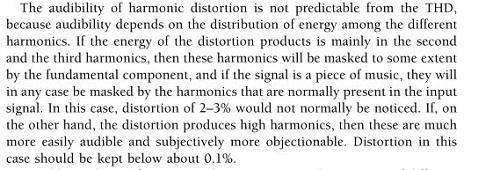KeithEmo
Member of the Trade: Emotiva
- Joined
- Aug 13, 2014
- Posts
- 1,698
- Likes
- 868
In the absence of proper evidence actually supporting a claim of difference it is most logical to not believe that claim rather than to believe it. Thus the burden of proof is on those claiming (hypothesizing) a positive difference between two conditions to provide compelling evidence for it. If such bodies choose not to, for whatever reason, we do not have to take their claims at all seriously, if they cannot provide strong evidence for their claims. Anecdotes do not count as evidence.
So, in other words, if I were to suggest that dog feces and filet mignon probably taste differently, you would maintain that, since we haven't seen any actual taste comparisons between the two, they probably taste the same? Really? You believe that, logically, a 16/44k file and a 24/96k file "must" sound the same because there's nothing missing from the 16/44k file to begin with - and so nothing that the 24/96k file can possibly do better. Yet someone else, equally logically, believes that a file that contains more than twice as much information "must" logically sound different. (While we're at it, I guess we can safely assume that I can paint as well as Rembrandt - until someone actually stages some sort of comparison to make sure (and, after all, I can use the same paint colors he did).
Are you beginning to see the problem? What you DIDN'T consider is that the way we humans do things is that we make assumptions based on our own personal prior experience and the base-line information we've decided to accept as true, then we "require" "strong evidence" to support any claims that disagree with those base-line assumptions. This works fine most of the time - as long as we always remember which pieces of "knowledge" really are, and which are just assumptions.
Five hundred years ago we'd be having this argument - about whether I could prove the Earth wasn't flat. Fifty years ago, if someone tried to sell you a pill that, when mixed with tap water, could run your car for a year, you knew it was a scam - because a pill couldn't possibly contain enough power to run a car for a year. But I wonder if, a hundred years from now, there will be cars that run on atomic power. (And I wonder if the fuel pellet they run on will be any bigger than "the pill that couldn't possibly exist". I'm guessing that a chunk of plutonium the size of a quarter just might be able to run a car for a year.) Quite a while ago it was "accepted fact" that vinyl was "virtually indistinguishable from the original. Then a certain tape company was certain you couldn't tell the difference between something recorded on their cassettes and reality. Then, when CDs came out, a bunch of people were just as totally convinced that they were "audibly perfect". Now, oddly, a lot of people seem to be claiming that CDs fall a bit short, and we "really need 24/96k". (Also, as for credibility, and "ulterior motives", it seems like many of the people pushing for high-def files today are the very same companies who were pushing for accepting that CDs were "good enough" when they came out.)
It happens to be my personal philosophy that, when I buy a copy of something I care about, I always get the best quality version I can afford (within reason) - because it's been my experience that my needs change. (Most of the GIFs that "looked pretty good" on my old monitor fall a bit short on my current one, I never succeeded in making a cassette copy that I couldn't tell from the original, and I definitely hear things with my new electrostatic headphones that I didn't notice at all with my dynamics. I truly pity the folks who own several thousand songs in MP3 or AAc format, and now find themselves having to buy them all over again after finally noticing the difference between what they have and CD quality audio. Therefore, given the choice, I'm always happy to pay an extra $5 for a 24/96 copy of something for "insurance"). Since storage space is cheap, and everything I own can play either version, I don't agonize over whether I can hear a difference at the moment or not - I just assume that, IF there is an audible difference, the 24/96k version will be the better one. And I'm also willing to concede that, when I do hear an obvious difference, it's just possible that "the evil music company" deliberately made the 16/44k version sound a little worse so I'd buy the "better" one. However, even if that's the case, I'd still rather have the better one. (We must always keep in mind that the discussion here is not whether it makes sense for the music industry to sell high-res downloads or not; the question is whether it makes sense for us as consumers to buy them.)




